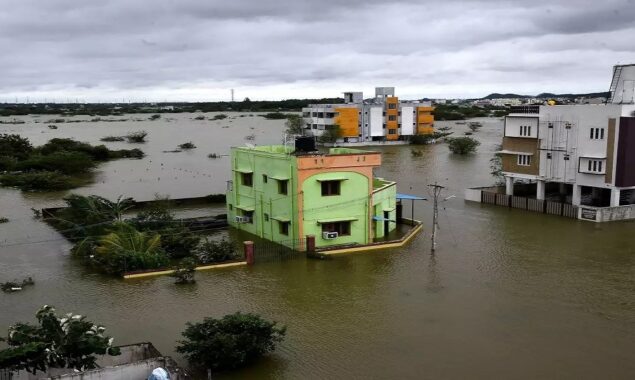7 injured as Brazil, Argentina football fans clash in Bangladesh
At least seven people injured, police say. Both South American giants have...

Vanishing rivers stir concern in Bangladesh credits google
DHAKA: Despite the fact that flooding has become a yearly occurrence in Bangladesh, more than half of the country’s rivers have become impassable and many more have disappeared, hurting the livelihoods of millions of people in the South Asian country.
Experts argue that engineering, dredging of riverbeds, and land reclamation have become important as the world celebrates Environment Week this week.
According to officials, just 172 of the 405 rivers that run through the delta region of Bangladesh are currently navigable. There are 57 trans-boundary rivers, 54 of which are shared with India and three with Myanmar.
River and Delta Research Centre (RDRC) Chairman Mohammad Azaz told Anadolu Agency that several rivers in Bangladesh have gone in the last 50 years, while others have lost their navigability.
According to the organisation, when Bangladesh got independence in 1971, there were 1,274 rivers in the country. A total of 507 people have gone since then.
“Three great rivers, the Ganges, the Jamuna (Brahmaputra), and the Meghna, flow through Bangladesh and into the Bay of Bengal. As a result, any river-control project undertaken upstream of the three big rivers will have an impact on Bangladesh,” Azaz explained.
He claimed that the Farakka Barrier, an 18-kilometer (11-mile) barrage built on the Ganga River in the Indian state of Uttar Pradesh, has caused rivers in Bangladesh to vanish.
“Many tiny rivers and tributaries in the Barisal region’s south-central and northern areas have also vanished. Upstream, India withdraws a large amount of water from major rivers, leaving limited supplies downstream, affecting Bangladesh’s tributaries and riverlets “Azaz went on to say.
Water shortages
Around the Teesta River, which runs across northern Bangladesh, a similar situation exists. The river’s source is in the eastern Himalayas, and it runs for 414 kilometres (257 miles).
“There are 11 tiny rivers that are presently dying as a result of the Teesta River’s water flows. “During the dry season, Teesta dies and emerges as infinite char, and agriculture that relies on it experiences a serious water shortage for irrigation,” he said.
During the rainy season, another 67 percent of Bangladesh’s land gets swamped or becomes a wetland. The biggest cause of concern, however, has been the impact of off-season rainfall and flooding on farmers and food security.
“Every year, such a circumstance impacts the entire food output and raises the price of essentials, and farmers suffer tremendous losses,” he said.
According to government data, a pre-monsoon flood inundated and ruined paddy produced on 5,000 hectares (12,355 acres) of land in the Hoar region bordering India.
“In the name of flood control mechanisms and management, we have constructed a large number of river embankments and switch gates, particularly in the country’s coastline region, which are not suitable for flood control and instead degrade the environment.”
There are almost 4,900 river grabs in all 64 districts, according to government data.
According to Azaz, a list of dead and endangered rivers should be compiled, as well as prompt steps such as sustainable dredging.
Diplomacy that is ineffective
“If we dredge rivers in an unintended manner, a river could die or cause other rivers to die,” he warned.
In the process of restoring rivers, Azaz advocated for the use of contemporary technologies and openness.
“Weak diplomacy is to blame for the bad state of the waterways. “We produced the Bangladesh Delta Plan-2100,” he continued, “but we don’t have a clear policy on how we would deal with the ongoing difficulty of negotiating with India for a fair share of common river waters.”
Catch all the International News, World News, Breaking News Event and Latest News Updates on The BOL News
Download The BOL News App to get the Daily News Update & Follow us on Google News.